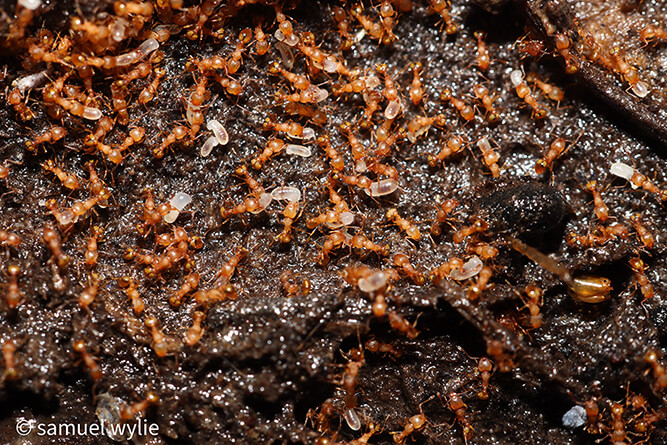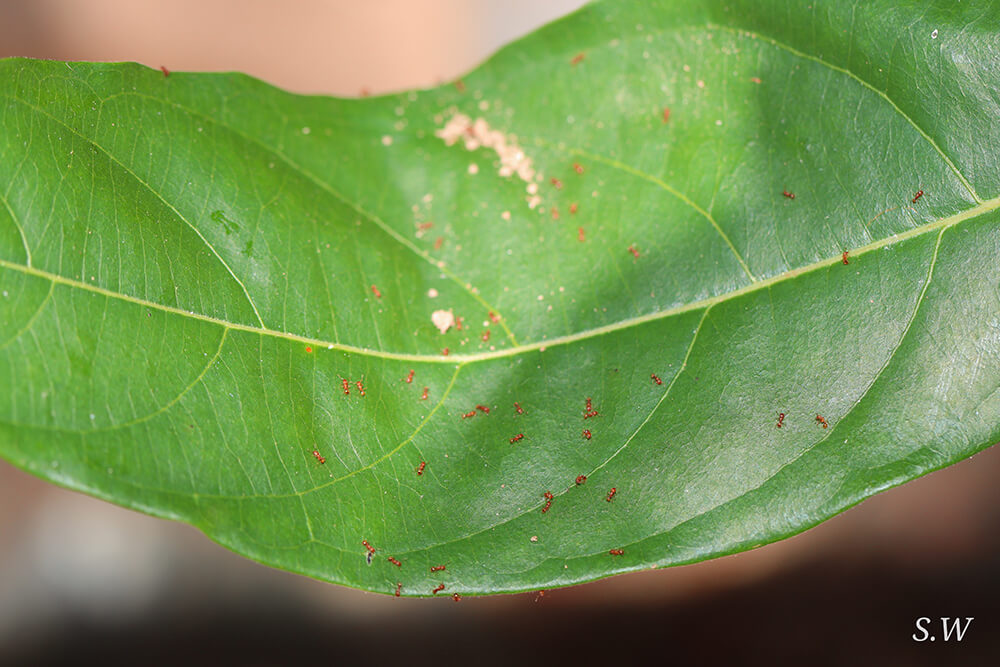Electric ant (Wasmannia auropunctata) is regarded as one of the world’s worst invasive species. This ant is exotic to Australia and is a serious threat to our environment.
These ants can inflict painful, venomous stings on humans, wildlife and domestic animals.
Detection in Australia
Electric ants were first detected in 2006 in Cairns, Queensland, in an area close to a World Heritage-listed rainforest.
More than 200 infestation sites have been found since the first detection. The affected areas are all in Far North Queensland in the following local government areas:
- Cairns
- Cassowary Coast
- Tablelands
- Douglas
- Mareeba
Response program
The Queensland Department of Primary Industries leads the eradication program.
This ant is a nationally significant pest. It is managed under arrangements that align with the National Environmental Biosecurity Response Agreement (NEBRA).
Costs are shared by the Australian, state and territory governments. The Queensland government contributes additional resources and funding to the eradication program. Local governments also contribute to the program.
The current response plan runs for 5 years from 2024 to 2029. The plan includes:
- surveillance activities (inspections, lures, and detector dogs).
- chemical treatment of infested sites.
- monitoring after treatment for at least 2 years to ensure the area remains electric ant-free.
- movement restrictions at high-risk sites and on potential host material.
- community and industry engagement activities to promote compliance and encourage reporting of suspect ants.
- research to optimise surveillance and control methods.
See more
- Electric ant (Business Queensland)
- How we coordinate a response to an outbreak
- National Invasive Ant Biosecurity Plan 2018 - 2028
Your obligations
You can help contain this ant by reporting any suspect sightings within 24 hours.
Avoid accidentally spreading electric ants. Take care not to move any ants on goods, vehicles, clothes, plant material, or within potted plants or soil.
Report sightings
If you suspect you’ve seen electric ants, report them as soon as possible. Even if you’re not sure.
In Queensland, report to Queensland Department of Primary Industries using the online form, or by calling 13 25 23.
You can request a free electric ant yard check at your home, even if you haven’t seen any suspect ants. More than 40% of infestations are found through free yard checks. Yard checks should be repeated every year.
To report suspect ants from anywhere in Australia call the Exotic Plant Pest Hotline on 1800 084 881.
For signs of exotic pests and diseases in imported goods, sea containers or parcels, call See. Secure. Report on 1800 798 636 or use the online form.
Follow the rules
Keep exotic dangerous pests and diseases out of Australia. Never ignore our strict biosecurity rules.
Imports may need to be treated and certified. Before you import, check the Biosecurity Import Conditions (BICON) system.
Movement controls
Check the interactive map at the Business Queensland website to see if you are located in the electric ant biosecurity zone. If your property is within the zone, you must:
- call Biosecurity Queensland for a free inspection before moving material that may spread electric ants from your property.
- dispose of your garden waste only at waste facilities listed on the website: Movement controls for electric ants in Queensland.
Although electric ant is only present in Queensland, invasive ants, including electric ants, are a recognised threat in all states and territories. More information:
The Australian Interstate Quarantine website includes information on restrictions on what you can take across state and territory borders.
About the pest
Electric ant is a threat to the environment and can seriously impact people and infrastructure.
The ant is native to Central and South America. It has spread to North America, Africa, Taiwan, Israel, Puerto Rico and Cuba. It has also spread to the Pacific including the Galapagos Islands, Hawaii, New Caledonia and the Solomon Islands.
What to look for
Electric ant is tiny and golden-brown. It can live in a range of habitats, nesting both indoors and outdoors.


How it spreads
Electric ants can hitchhike on goods and vehicles. They can move with shipping containers and cargo. They can hide in soil, mulch, fertiliser, potted plants, and plant material.
The further the ant spreads, the more difficult it is to eradicate it.
Impacts
Electric ants prey on, and compete with, other insects. They can displace native animals, insects and some plants. They can inflict painful stings on people and wild and domestic animals. Repeated stings can permanently blind animals.
Electric ants can colonise trees as well as the ground and can rain down when disturbed. Residents living in electric ant infested areas have been stung in their swimming pool, garden, and inside their homes.
Electric ants can also affect the agricultural industry. They feed on honeydew from sap-sucking insects and protect them from predators. This can lead to an increase in sap-sucking pests in crops, reducing the health and yield of the crop. Agricultural workers in heavily infested areas overseas have been affected by stings.
Electric ants are on the National Priority List of Exotic Environmental Pests, Weeds and Diseases (2020).
